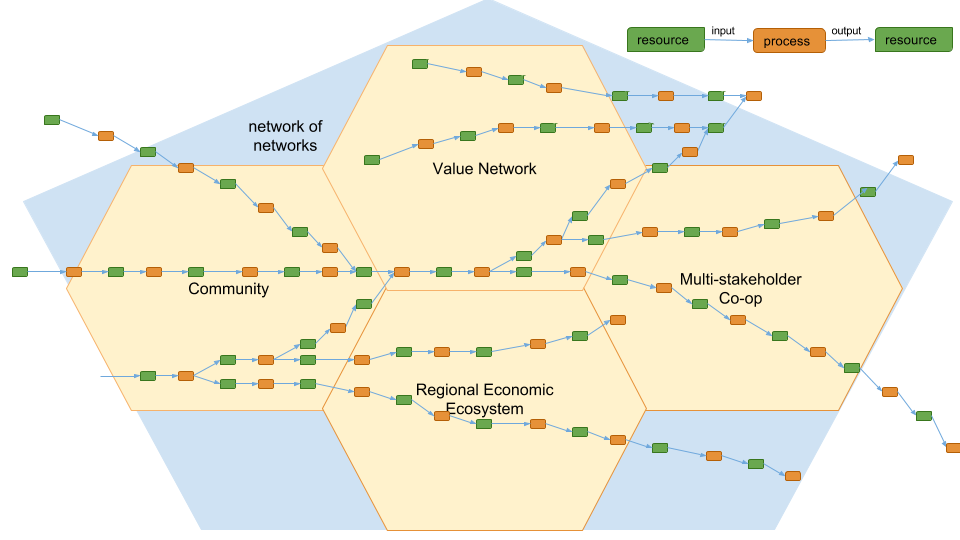Next-generation Economic Network Planning and Operations
Short version: this is my vision of how we can meet our resource needs cooperatively in the future.
And here's a relatively quick win: see Economic network software below.
Long version: keep reading.
What it means, how it will work, and the software it will need
An economic network is an organization of economic agents that works together to create and distribute economic resources, for example, a food network composed of farms and food processors and distributors that grows, processes, and distributes food to families. Institutions like schools and hospitals that may also be members of the network.
Older economic networks include commercial supply chains that are also economic networks, but those are dominated by big profit-seeking corporations. The next generation economic networks that we envision will be aimed at provisioning human and ecological needs without private profit and maybe without money.
Why networks?
Big corporations are too big, powerful, rigid, bossy, greedy, etc. Networks can include smaller organizations and even individual people as members, and the participants can form and reform as they like.
Maybe more importantly, capitalist greed will kill the planet. So cooperative economic networks can be an antidote.
My vision requires social provisioning to meet everybody's essential needs. Otherwise people will want corporate or government health care, pensions, etc.
The social provisioning needs to come first. but could be provided by networks for their members and then expand by inter-networking.
Economic network software
Commercial supply chains use a combination of Enterprise Resource Planning (ERP) and Supply Chain Management (SCM) software that typically costs millions of dollars and takes years to deploy. One leading example of such software is https://www.sap.com/index.html
An open source alternative exists, e.g. https://www.odoo.com/ , that greatly reduces the software cost, but not the time and cost to learn and deploy.
But the quick win is to develop a new combo of ERP + SCM based on https://www.valueflo.ws/ – the data models, and most of the logic, are there. And it uses the flow-oriented approach advocated below. And several projects are working in that direction that would love your help. See https://www.valueflo.ws/appendix/usedfor/
Cisco agrees. They filed a patent based on Holochain (one place that Valueflows is being implemented):
Thoughts on the @Cisco patent filing integrating @holochain - as a long-time follower, an active Holo host, and a formerly certified (3x) Cisco associate.
— Todd Youngblood (@todd_x_y) January 16, 2024
Although my certification was in network structure and security, this patent news caught my eye. My initial insight was that… https://t.co/iCfrG6vMW5
The problem with existing ERP + SCM software
Those systems grew by accretion, adding parts year by year, with no overall redesign. The main component was Material Requirements Planning, or MRP
https://en.wikipedia.org/wiki/Material_requirements_planning ,
MRP was brilliantly designed: the first business computer system that did something that could not practically be done at scale manually. MRP was flow-oriented. After that, the add-on parts were tacked on from older systems that were not flow-oriented, like Accounts Payable and Receivable that were designed to impede the flows to control the money. Nobody did a redesign of the whole system from flow-oriented principles. And the whole conglomeration of tacked-on parts got bigger and more complicated and expensive and slower to deploy and operate.
Network Requirements Planning (NRP)
NRP is the next generation of economic network planning and operations software. The first version I know of was developed in a collaboration between https://www.sensorica.co/ and http://mikorizal.org/ . Now I'm seeing more people adopt the name and acronym, for example https://www.panorama-consulting.com/network-resource-planning/ .
The NRP system that Sensorica and Mikorizal built was oriented around resource flows. not accounts.
Flow-oriented systems
Resource flows travel in and out and between organizations and even non-human organizations like natural ecosystems:
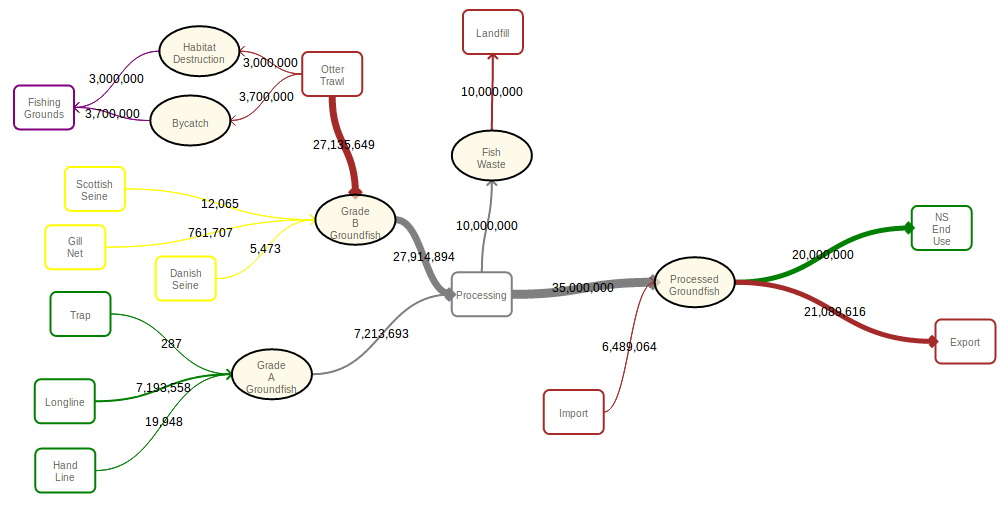
(Alas, that network should compost its fish waste and use it for growing food...)
The typical ERP system internal data flows are more oriented toward financial controls than material resource flows, so the material resource flows get all chopped up and become difficult to follow, let alone manage.
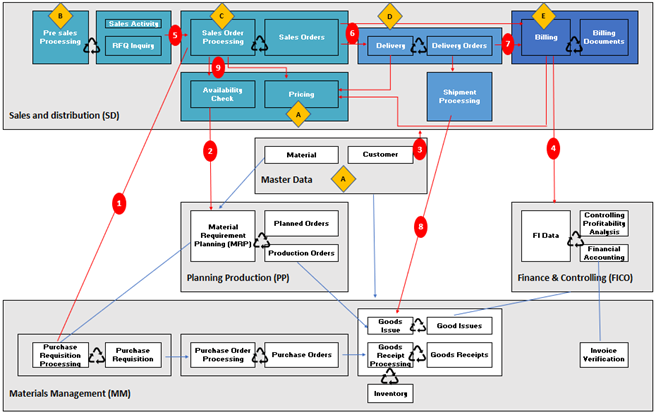
And the internal flows do not connect to the resource flows of other network partners, so a typical ERP system tacks on another whole system to manage supply chains.
In a Network Resource management system, they are all connected as parts of the same flows.
Here's a screenshot from a Valueflows app in development for the New York Textile Lab https://www.newyorktextilelab.com/ :
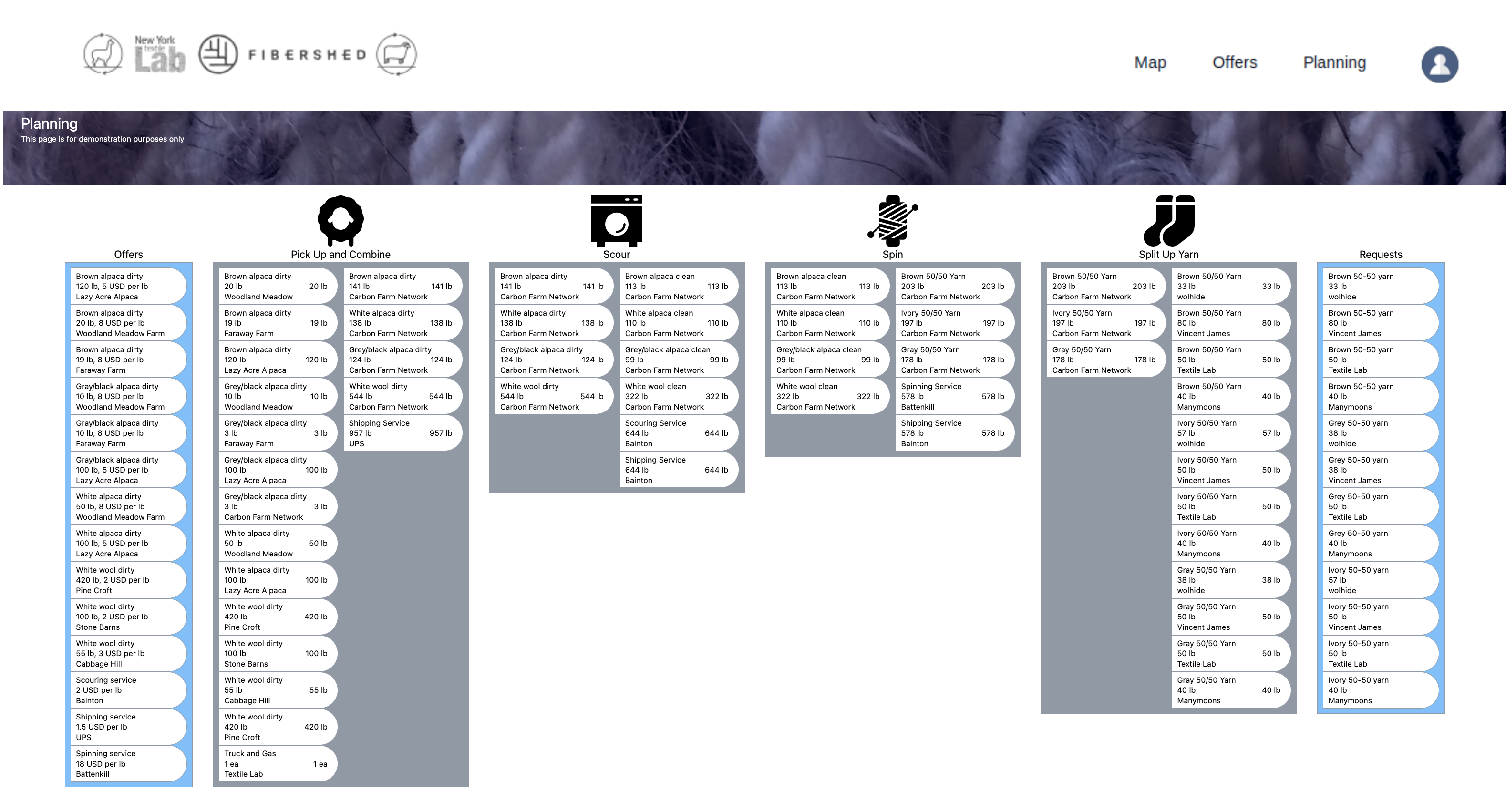
That same table could be used by each of the participants: farmers offering wool, truckers moving the wool to the next stage. scouring mills cleaning the wool, and the table goes on to spinners creating yarn, knitters and weavers making cloth and creating garments for people to wear. And each participant can see what changes each of the other players are making so they can stay in sync. It's very different from an ERP+SCM system that is usually run by the biggest company, usually the head of the supply chain, to manage everybody in the “lower tiers”.
Here are some resource flow diagrams created by the Textile Lab for sweaters, hats, and blankets:
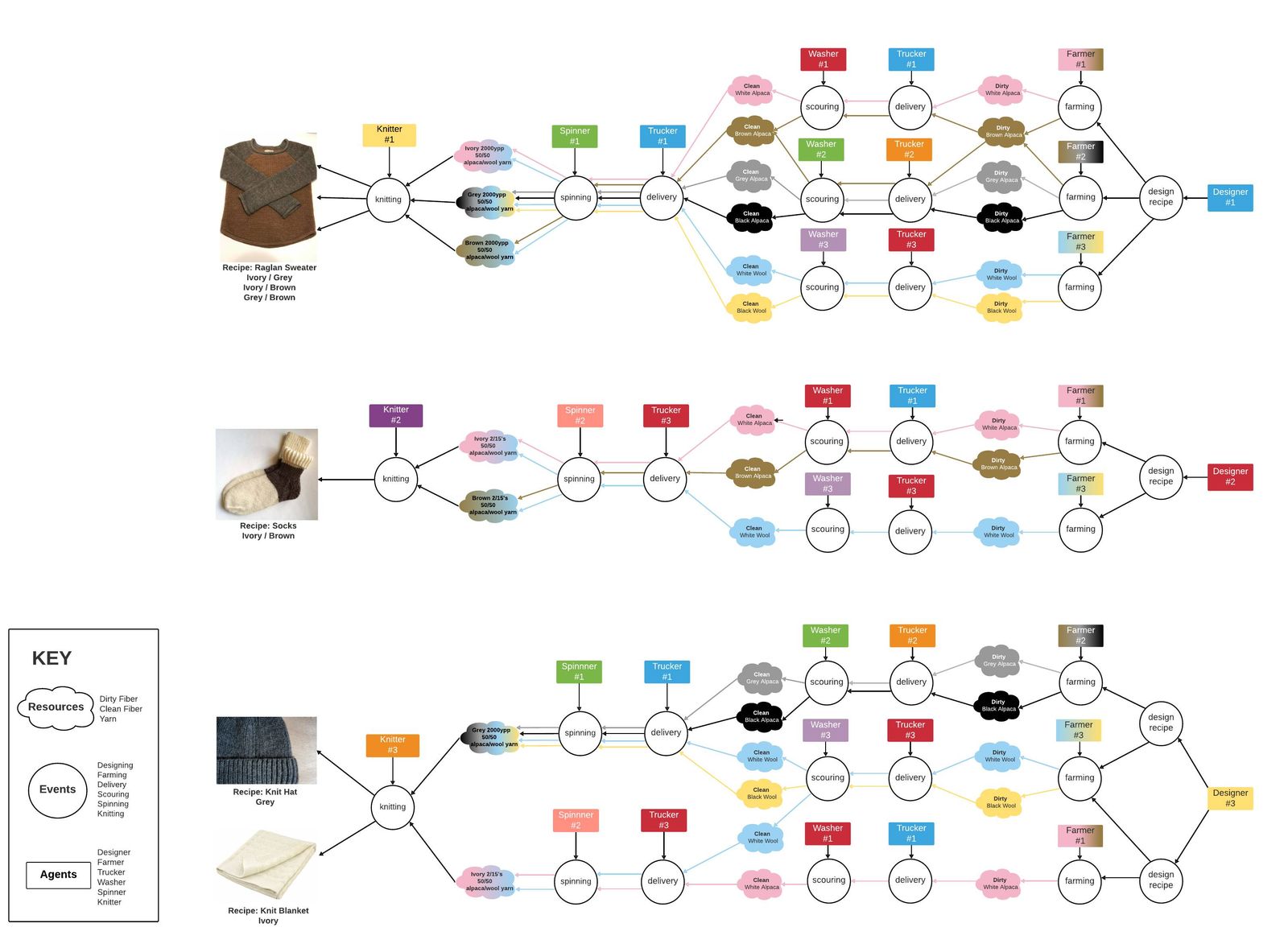
Those diagrams can also be recreated in software. So each of the participants can be contributing to the same diagrams, as with the table above.
Those tables and diagrams are a lot easier to understand and use by the farmers and spinners and weavers in the textile networks than an ERP system. We've done some preliminary tests and will do more and adjust anything that is not quickly understandable.
Once the first example of such a system (the one for the Textile Network) is up and running, similar systems can be tailored for other networks. After the second or third network, the general patterns for economic network software should be identifiable and turned into a software pattern for similar systems.
The bigger wins
- Systems like the one envisioned here can help peer-to-peer cooperative networks manage themselves as efficiently as big corporations are now. Even better, because cooperation will work better for everybody than corporate command-and-control.
- Well-organized economic networks can internetwork, join together, into larger-scale cooperative economies.
